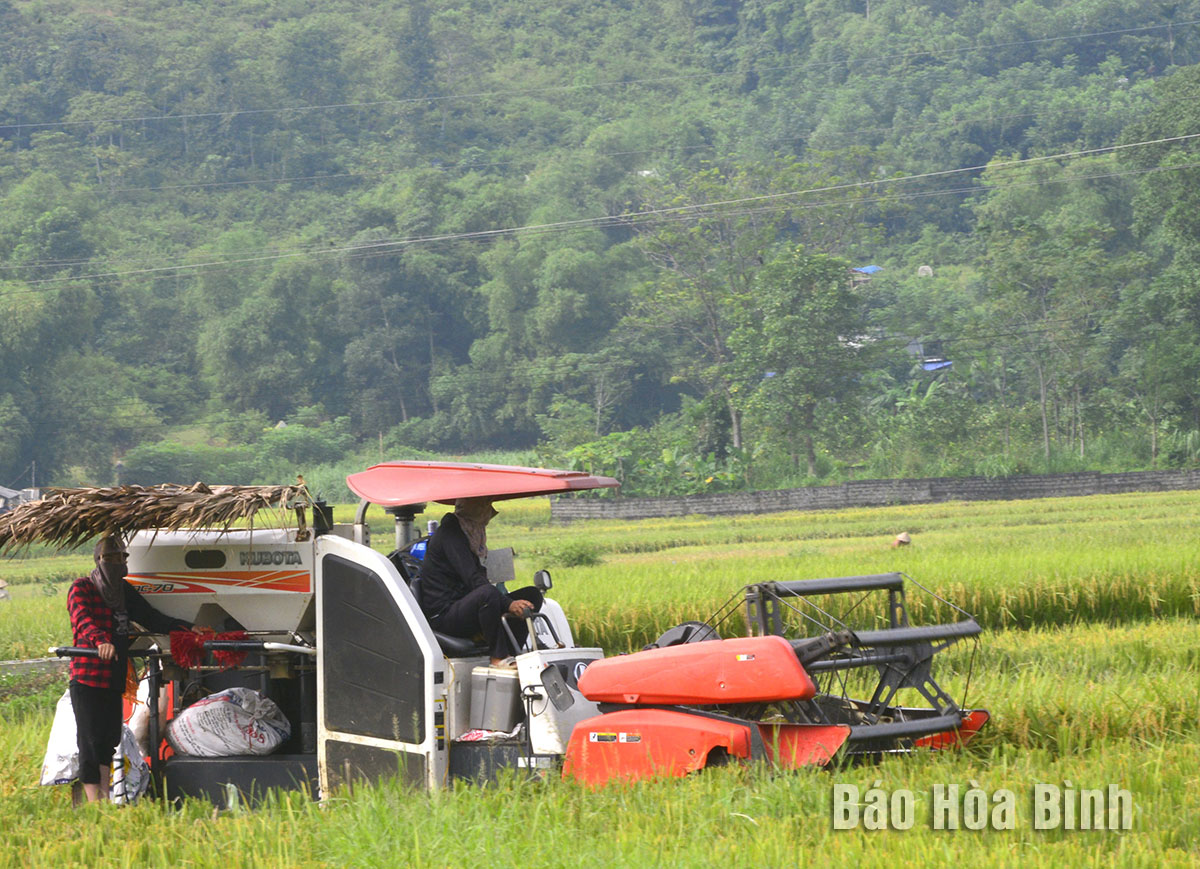
(HBO) – Authorities and people in Kim Boi district have been making efforts to meet the criteria of new-style rural areas.
Farmers in Bo township, Kim Boi district, use machines to improve the efficiency of agricultural production.
Public awareness of building new-style rural areas is increasingly improved, especially in production-consumption linkage, science and technology application, environmental protection, rural landscape improvement, and traditional cultural preservation. As a result, the rural areas’ look gradually changes, production develops, and people's lives constantly improve. In the first nine months of 2023, the district mobilised more than 753 billion VND ( 30.66 million USD) to build new-style rural areas, of which the community’s contribution accounted for 4.1%.
The district has been implementing specific solutions to develop production and increase people's income. The whole district has over 210 ha of production applying VietGAP standards. It is maintaining and developing models and high-quality products such as orange, grapefruit, dragon fruit, and vegetables.
Each commune has a key product such as winter melon and cucumber in Nam Thuong, Kim Lap, Sao Bay, Du Sang; potato in Vinh Dong; citrus fruit in Tu Son, Kim Lap, Vinh Tien, My Hoa; and medicinal plants in Hung Son. The district has also promoted production linkage models and now it has 30 agricultural cooperatives and 17 livestock farms.
By the end of September 2023, on average, each commune in the district met 13.6 criteria. Dinh Tat Thang, head of the district’s Department of Agriculture and Rural Development, said that despite of difficulties remaining, the district targets that by the end of 2023, communes in the whole district will meet 14 criteria of new-style rural areas on average. The district also targets to have one new-style rural residential model, two farming models and two new products meeting the requirements of the One Commune – One Product (OCOP) programme. The district is focusing on mobilising resources to improve the infrastructure system, production and people's lives.
Hoa Binh province is undergoing a dynamic transformation amid Vietnam’s national digital transition. Building on Poliburo’s Resolution No. 57-NQ/TW on breakthroughs in science, technology, innovation, and national digital transformation, the province has rolled out a wide range of practical action plans. A standout initiative is the "Digital Literacy for All” movement, an effort to ensure that no one is left behind in the digital era.
Hoa Binh province is undergoing a dynamic transformation in the wake of the national digital transformation movement. Building on Resolution No. 57-NQ/TW of the Politburo on breakthroughs in science, technology, innovation, and national digital transformation, the province has implemented a wide range of practical action plans. A standout initiative is the "Digital Literacy for All” movement ambitious effort to ensure that no one is left behind in the digital age.
With a spirit of unity and proactive problem-solving, the Party Committee, the government and the people of Dong Lai Commune (Tan Lac District) have made great strides in implementing the resolutions of the 24th Party Congress of the commune for the 2020 - 2025 term. Focusing on leadership and practical actions, the commune has brought the Party’s resolutions into daily life, creating strong impacts and pushing the local development forward.
Amid the nationwide push for digital transformation, young people in Hoa Binh Province are stepping up as dynamic pioneers, applying technology to enhance Youth Union operations and expand the reach of youth-led initiatives. Through creativity and adaptability, Youth Union organizations at all levels have introduced a series of practical solutions, contributing to modern governance and community development.
In recent years, An Nghia commune, located in Lac Son district, has stepped up administrative reform, focusing on improving the quality and efficiency of its single-window service unit for receiving and processing administrative procedures. These improvements have helped create favourable conditions for local residents and organisations to handle administrative procedures, contributing to the commune’s broader socio-economic development.
The Prime Minister-approved master plan to develop the multi-use value of forests ecosystems through 2030, with a vision to 2050, aims to improve the management and sustainable use of forest resources, create jobs, increase incomes, and improve the living standards of ethnic minorities, people in mountainous and remote areas, forest workers and those living near forests.



